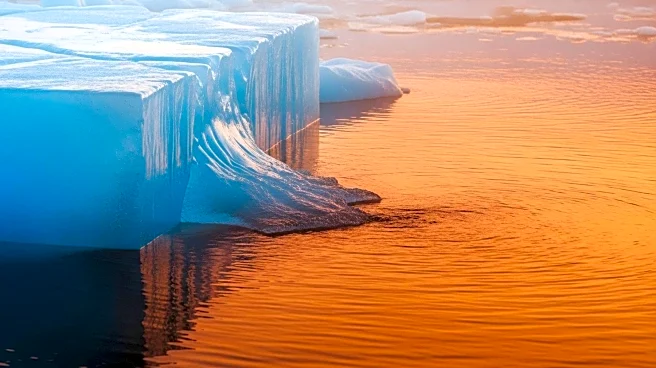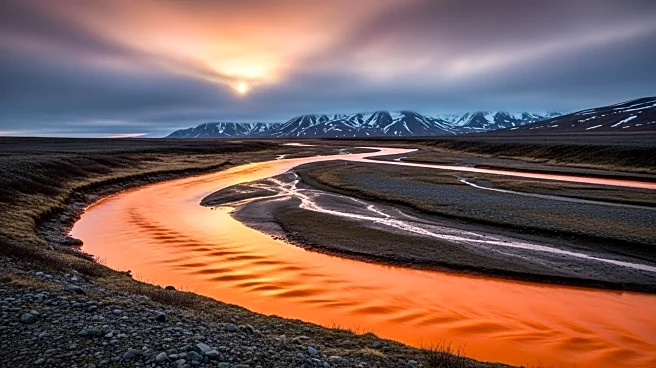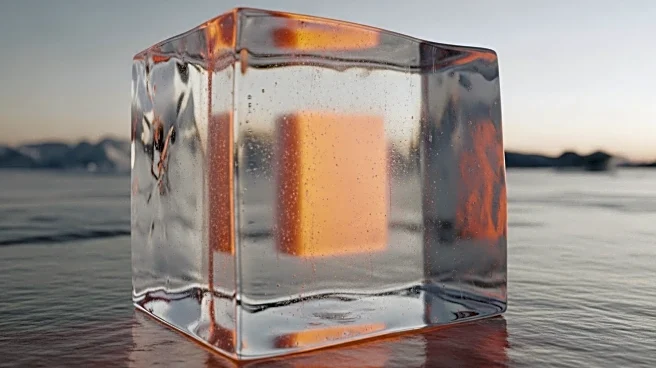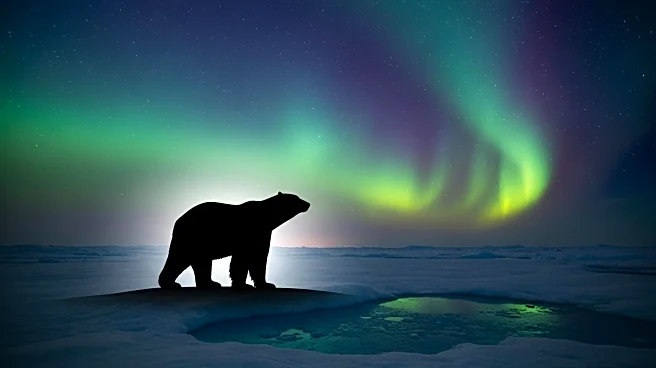What's Happening?
Recent research published in the journal PNAS has uncovered that ice can dissolve iron minerals more effectively than liquid water, leading to the mysterious orange discoloration of Arctic rivers. The study, conducted by Jean-François Boily and colleagues at Umeå University, found that ice at temperatures as low as -10 degrees Celsius creates acidic microenvironments that facilitate the dissolution of iron from minerals. This process is intensified by freeze-thaw cycles, which release iron into the water, affecting water quality and aquatic ecosystems. The findings challenge previous assumptions about chemical reactions in frozen environments and have implications for understanding environmental changes in the Arctic.
Why It's Important?
The discovery that ice can actively contribute to mineral dissolution has significant implications for Arctic ecosystems. As climate change increases the frequency of freeze-thaw cycles, more iron is released into rivers, potentially altering water quality and impacting aquatic life. This phenomenon could affect the livelihoods of communities dependent on these ecosystems and necessitate new approaches to environmental management. The study also highlights the need for further research into the chemical dynamics of frozen environments, which are becoming increasingly relevant as global temperatures rise.
What's Next?
Researchers are continuing to investigate the broader implications of their findings, including whether similar processes occur in other icy environments. Understanding the full impact of iron dissolution on Arctic ecosystems will require comprehensive studies that consider both chemical and biological factors. Policymakers may need to develop strategies to mitigate potential negative effects on water quality and biodiversity.
Beyond the Headlines
The study underscores the complexity of environmental changes in the Arctic, where seemingly minor chemical processes can have far-reaching consequences. It also raises questions about the role of ice in global biogeochemical cycles and its potential impact on climate change. As the Arctic continues to warm, these insights will be crucial for predicting and managing future ecological shifts.











